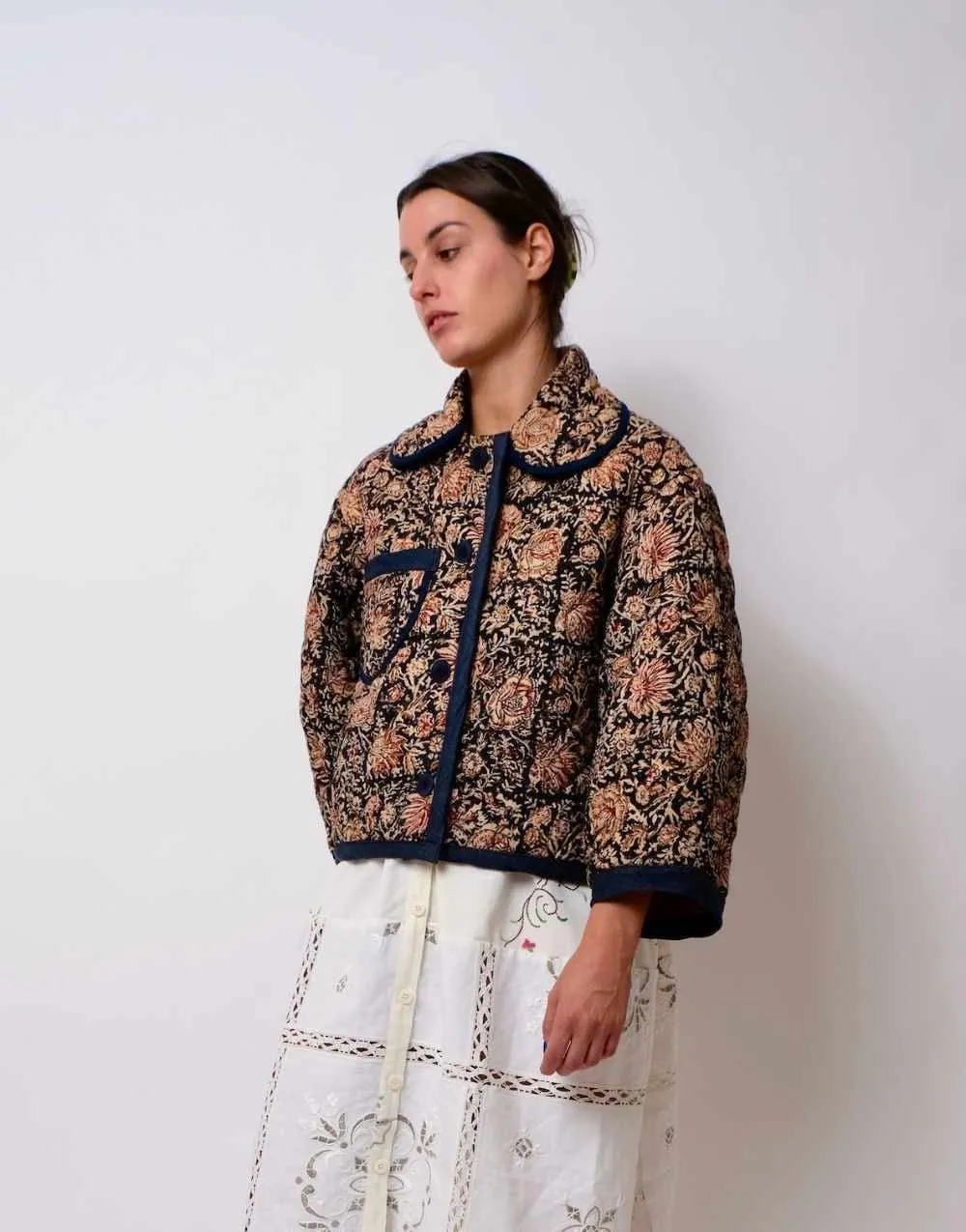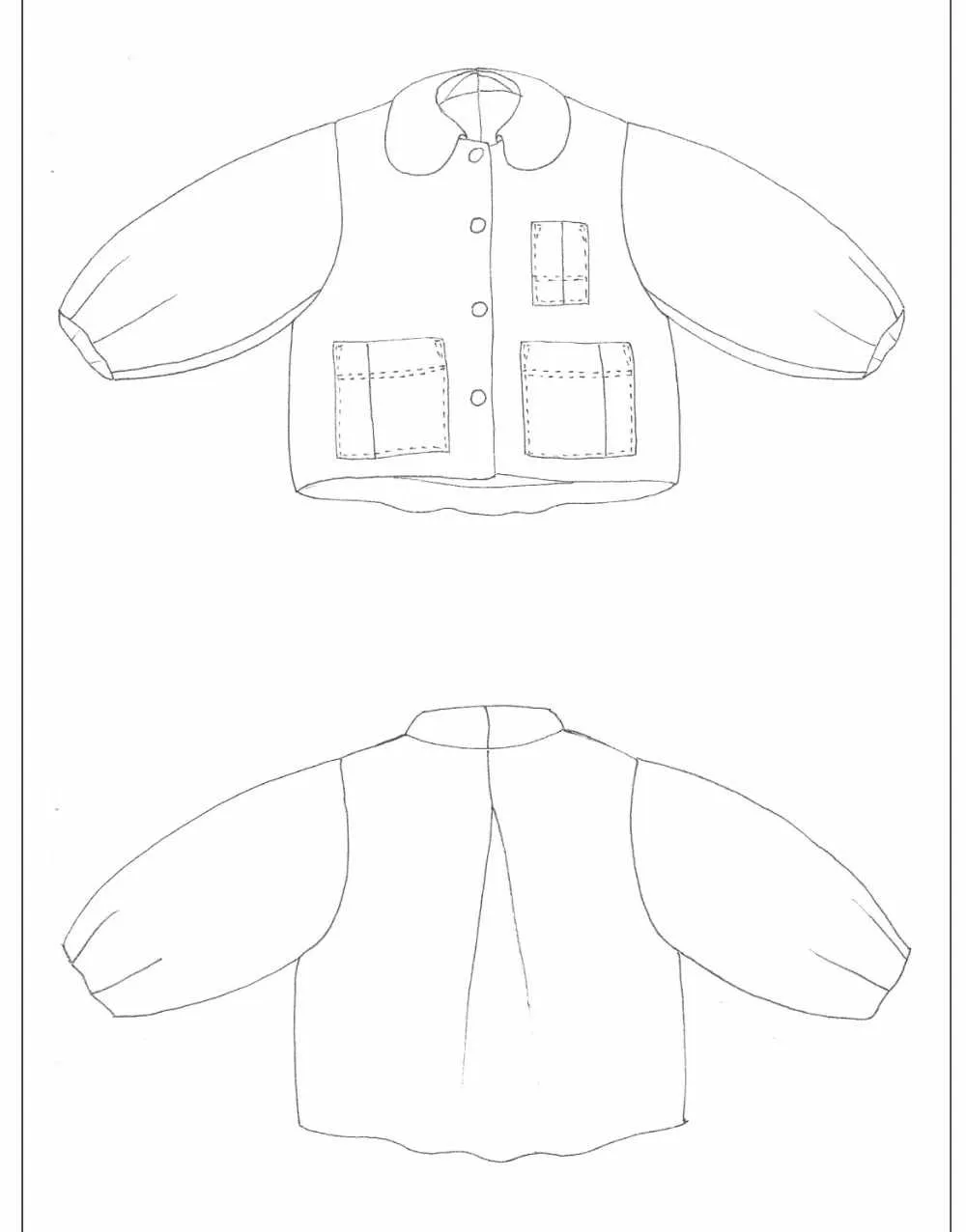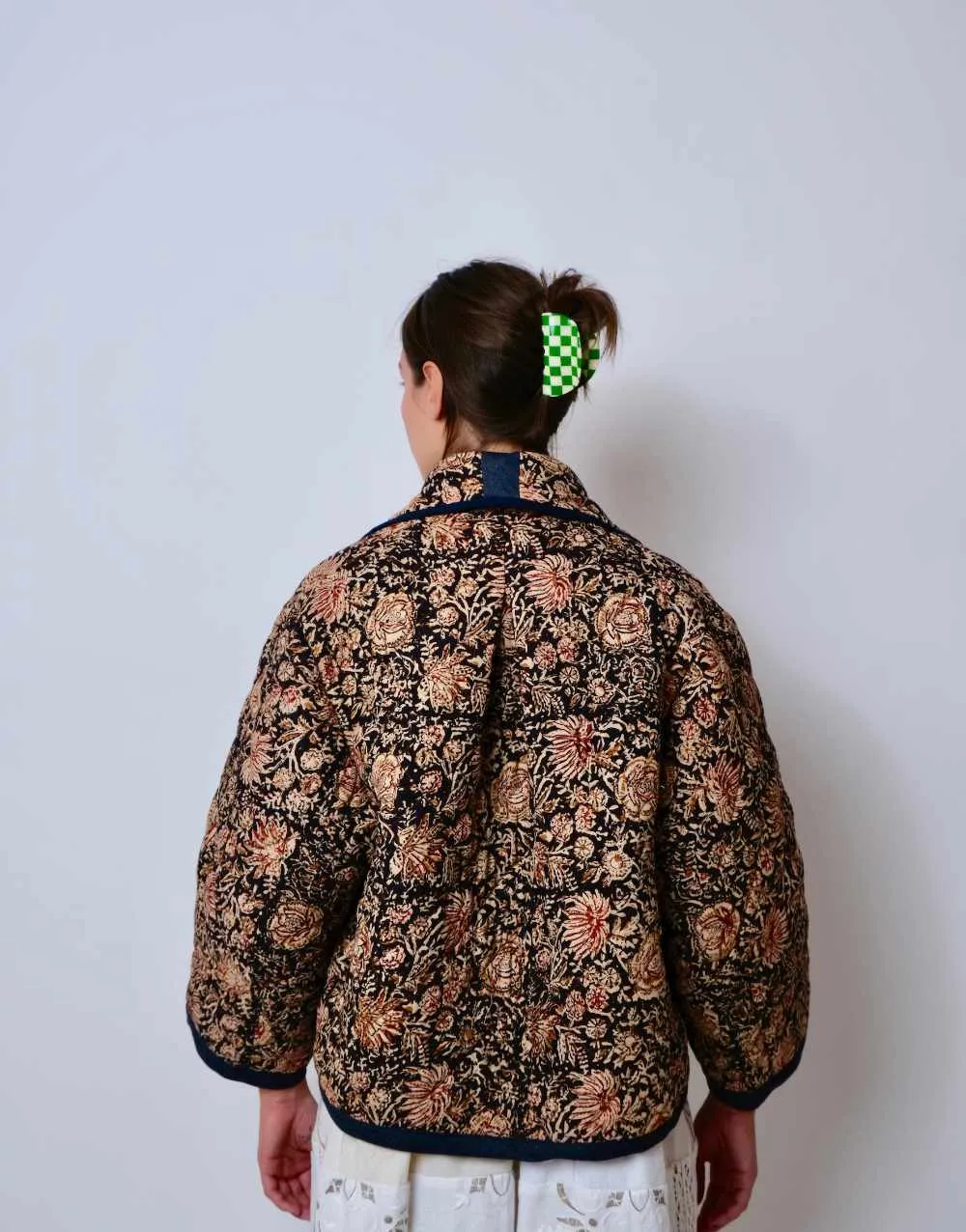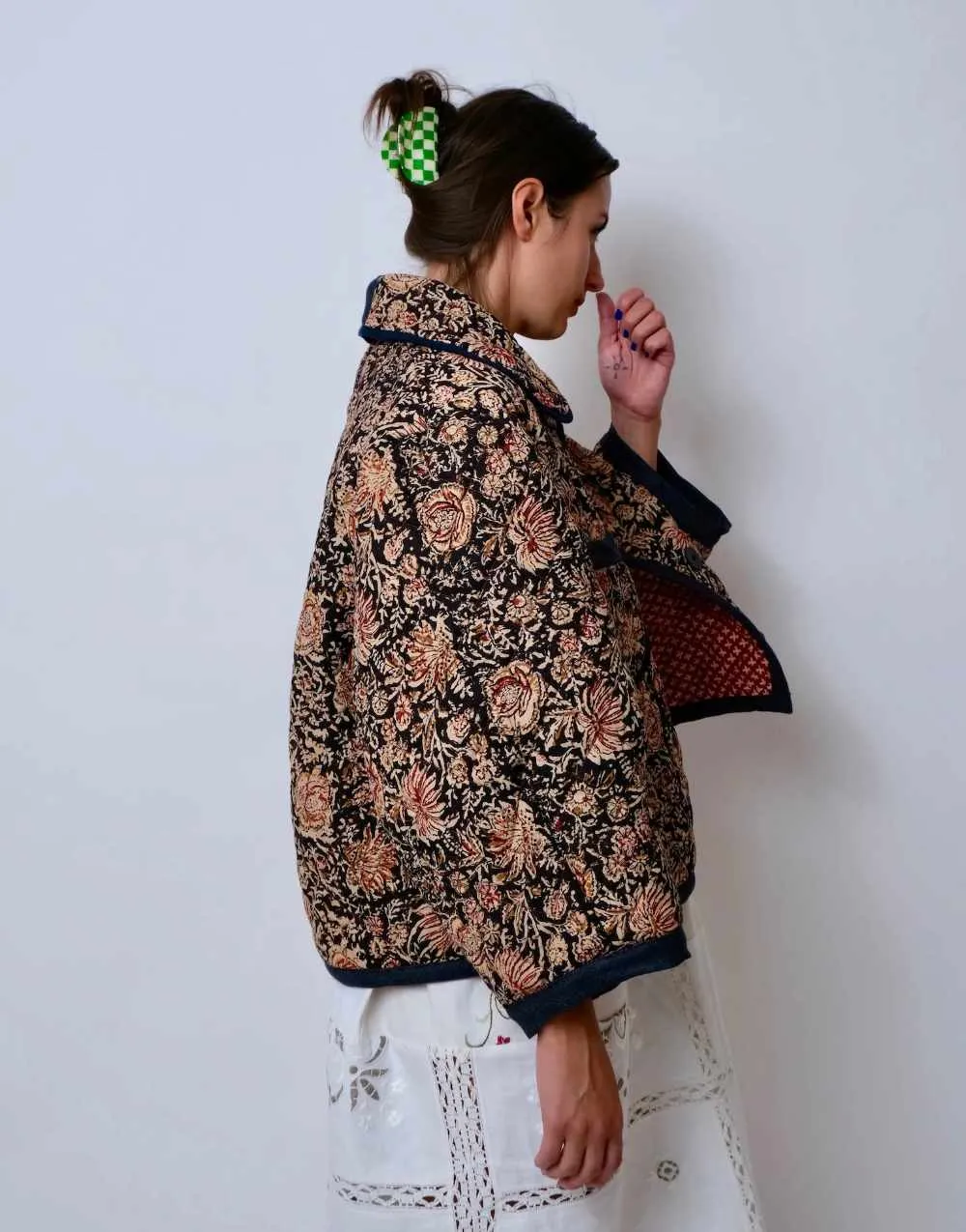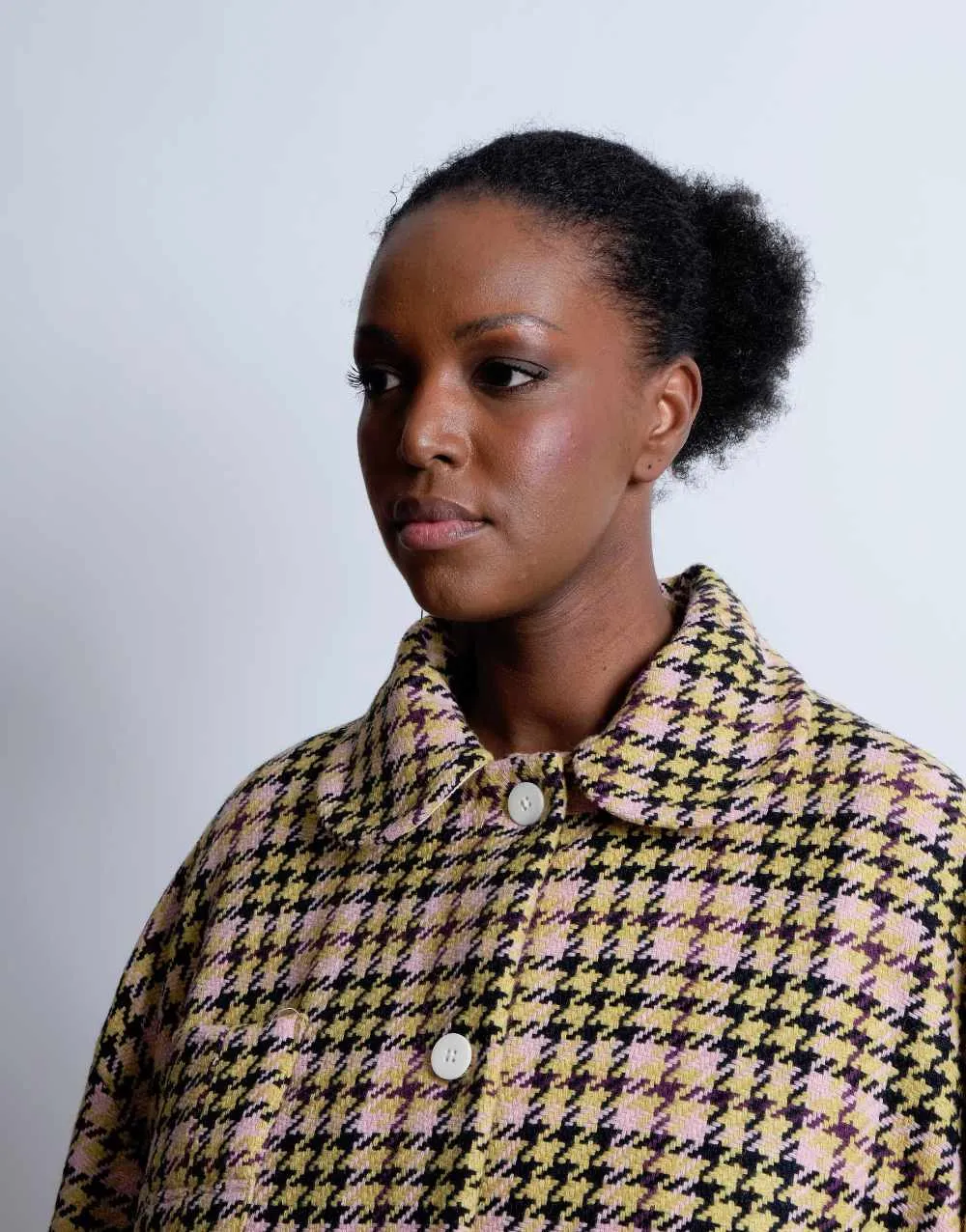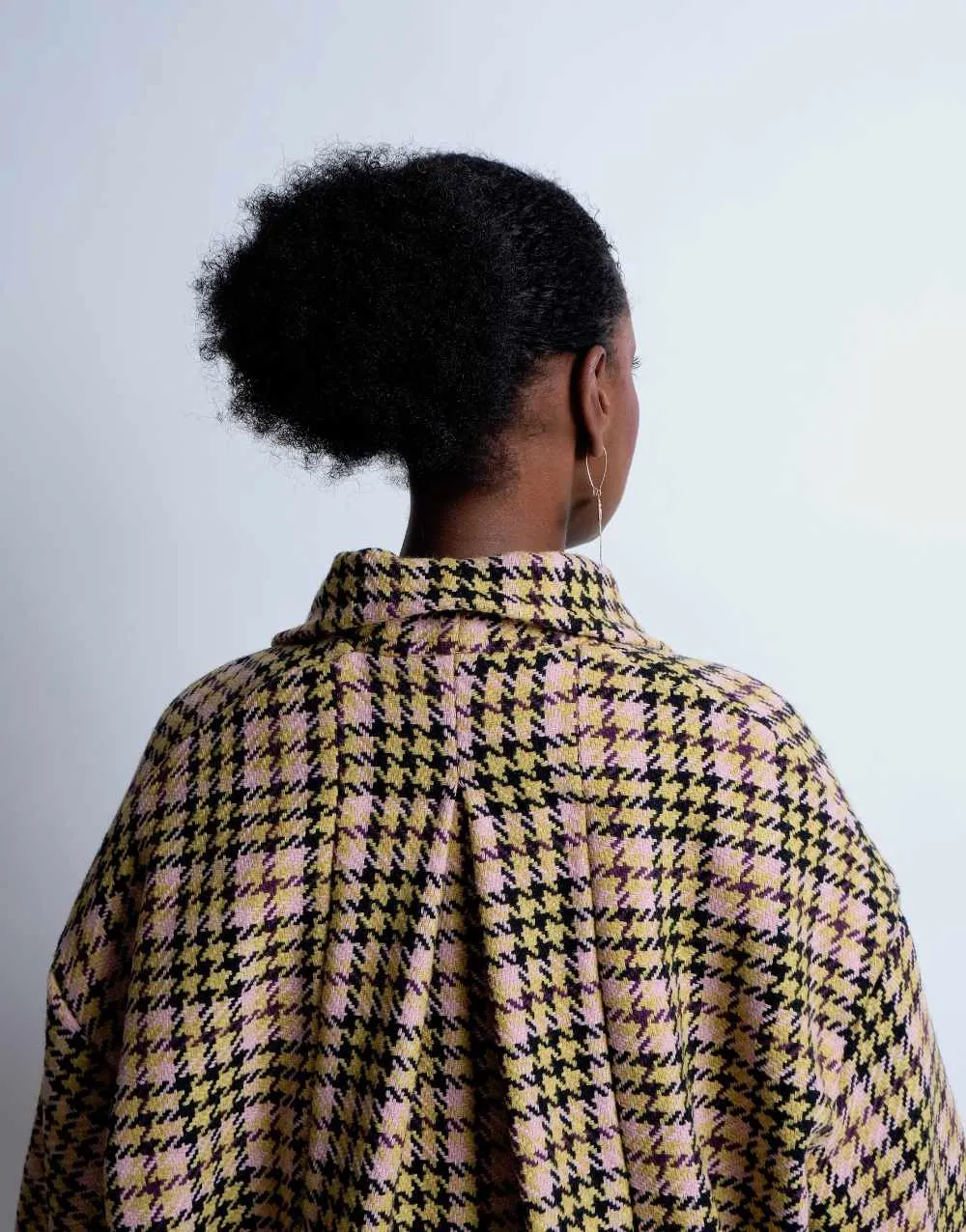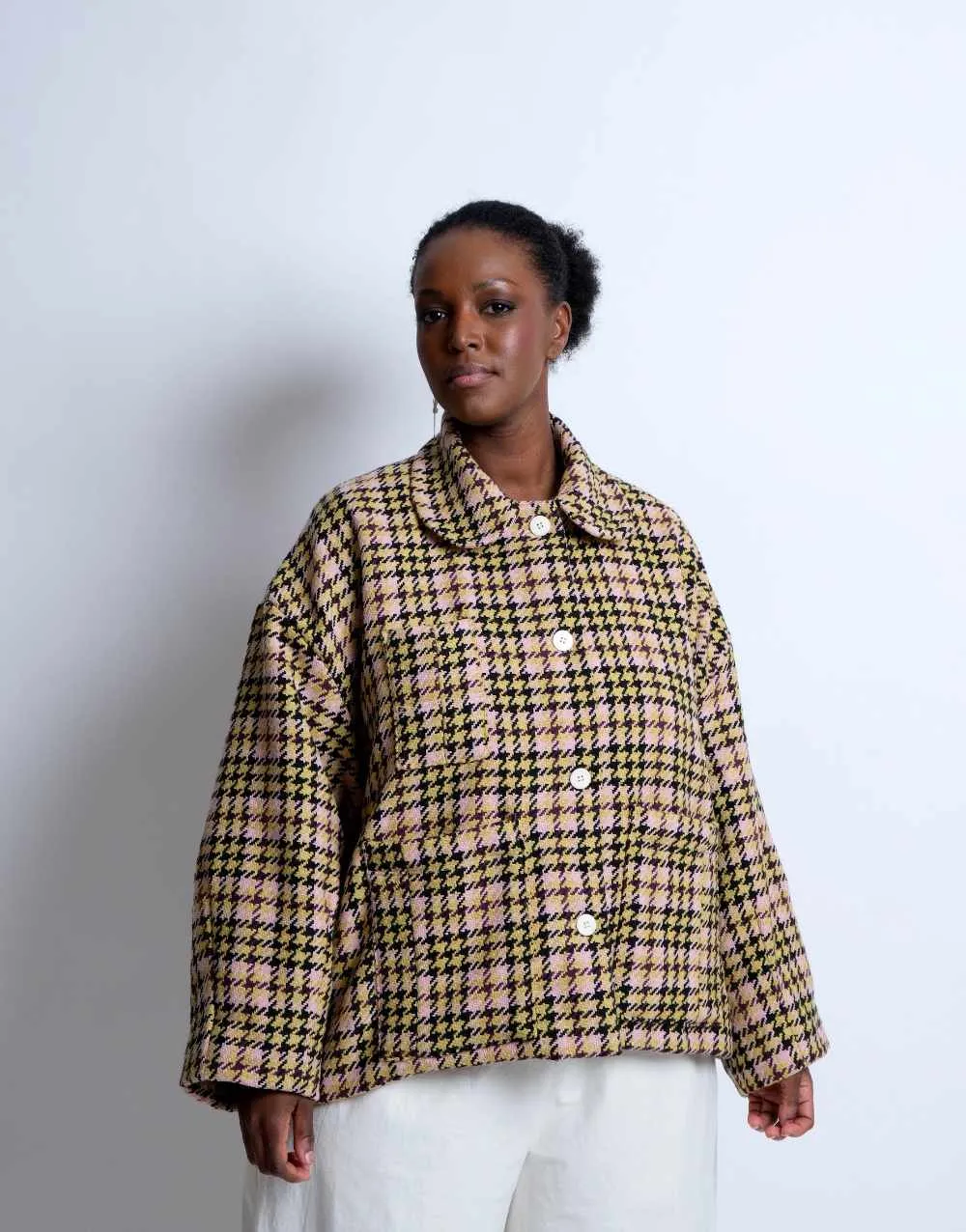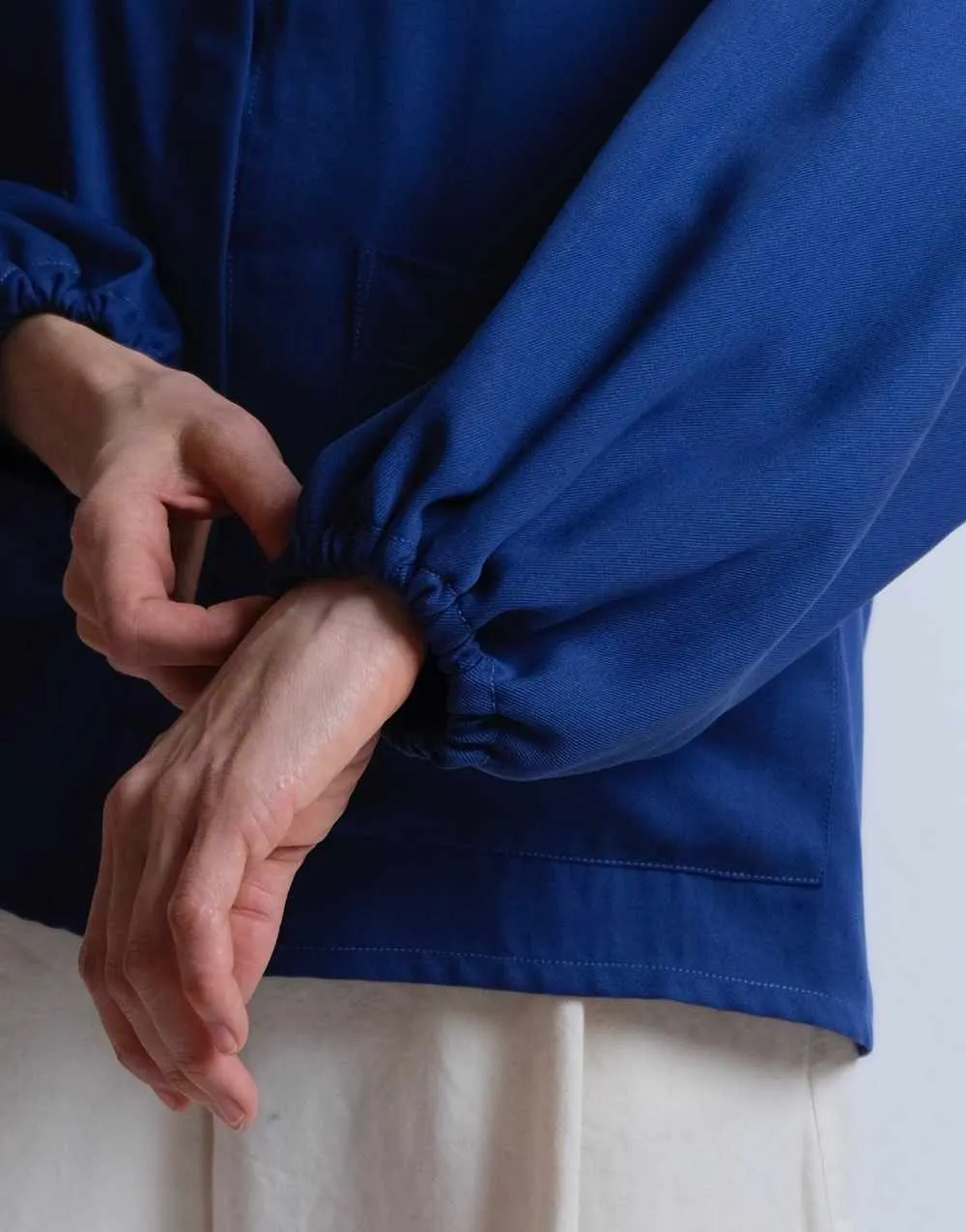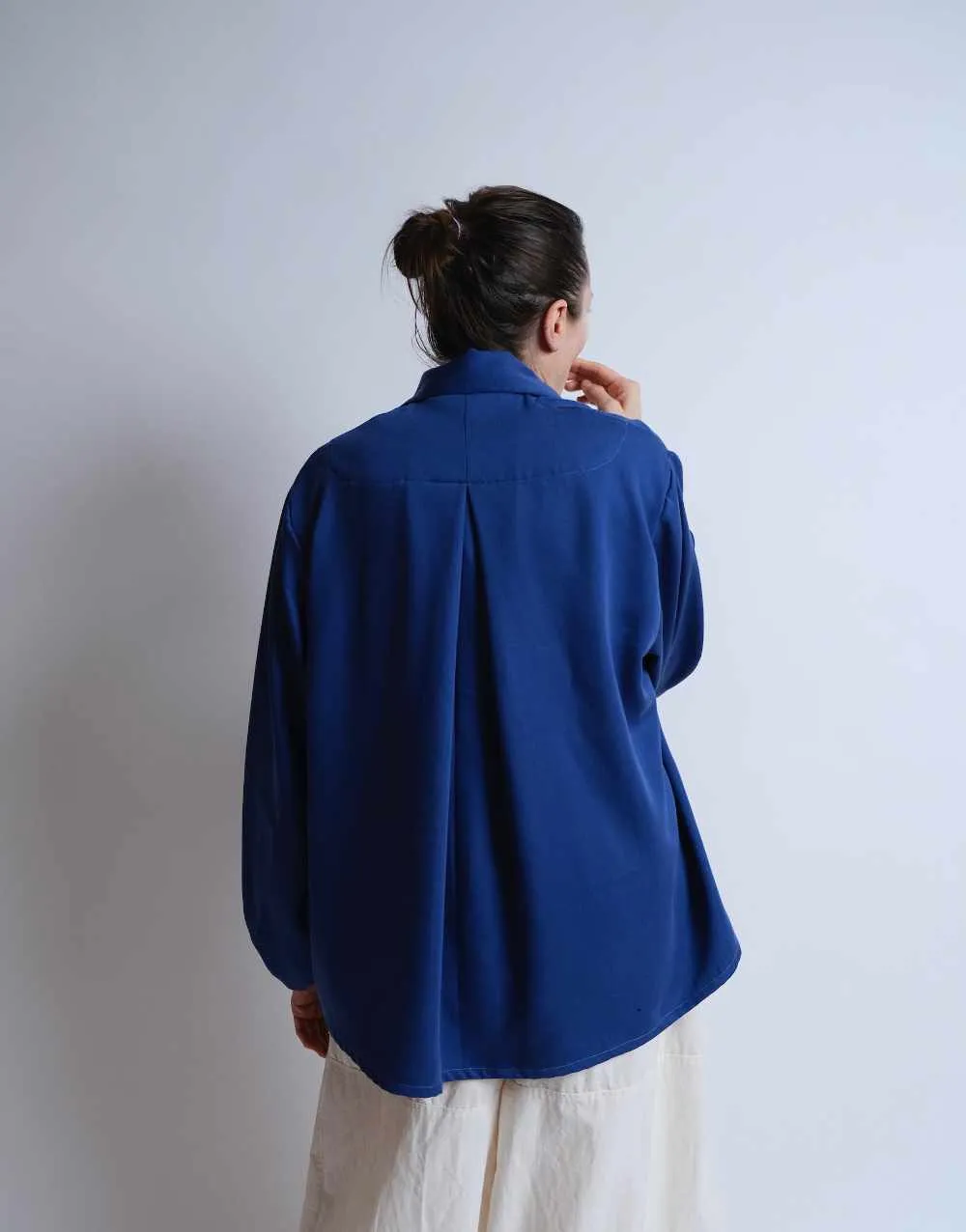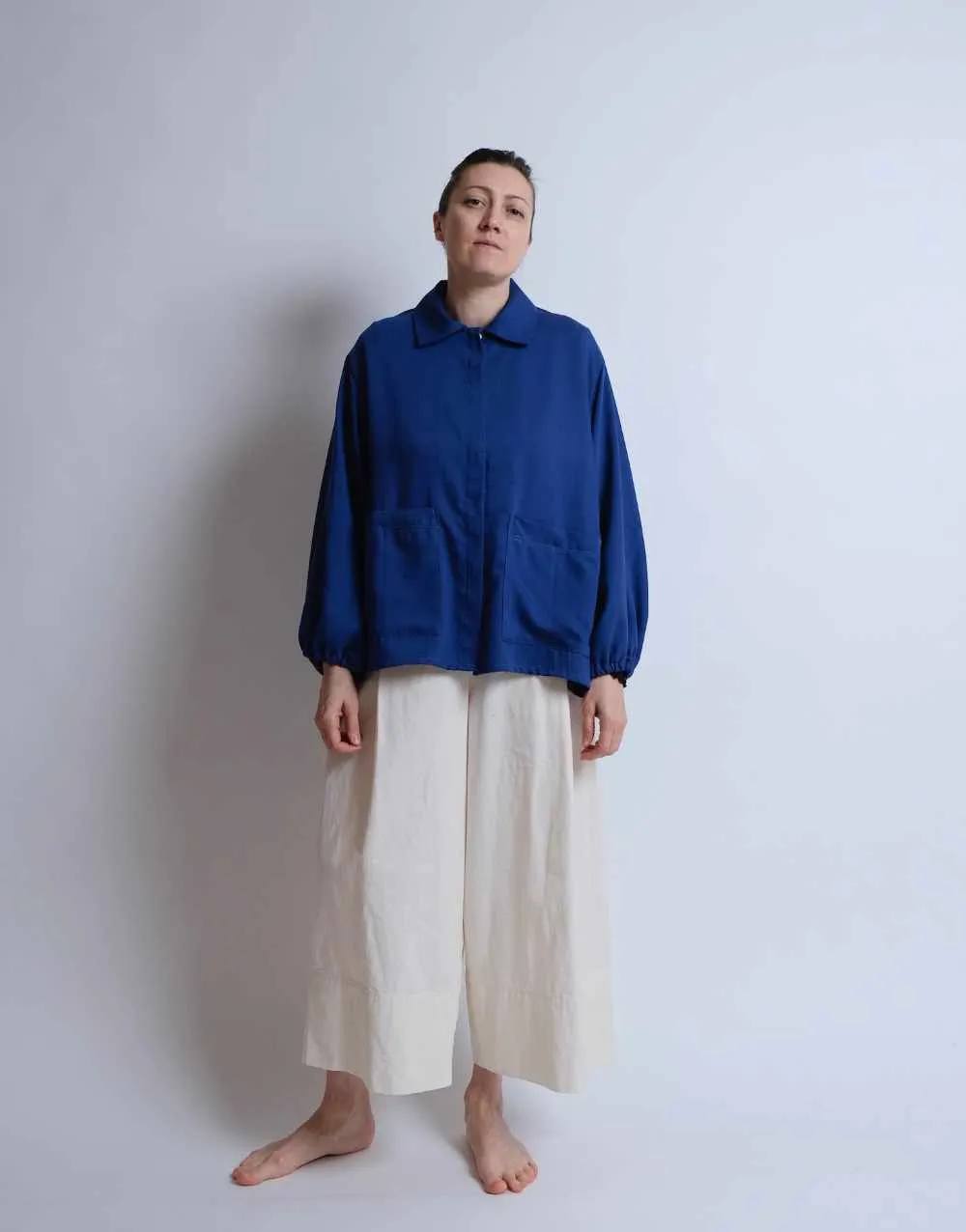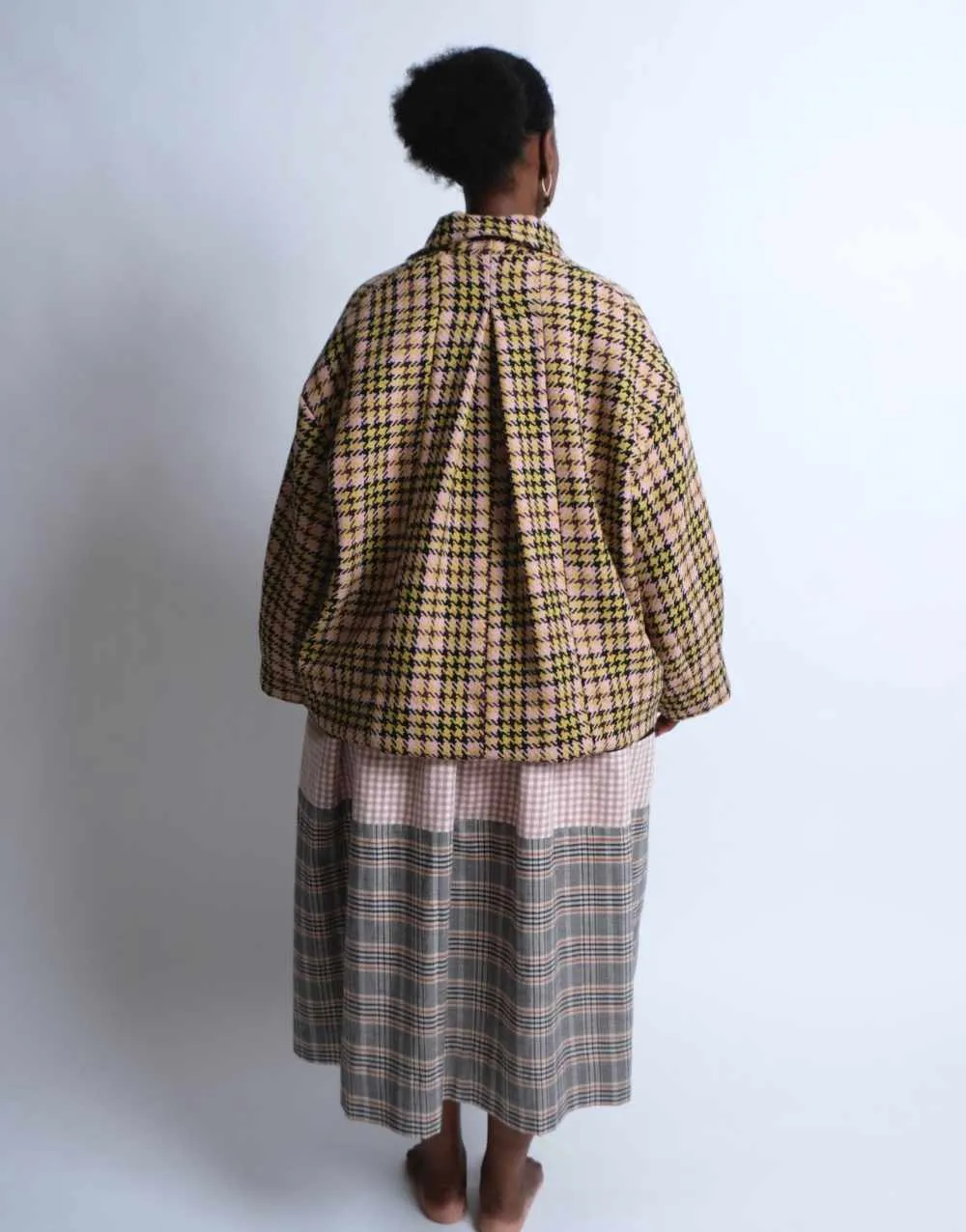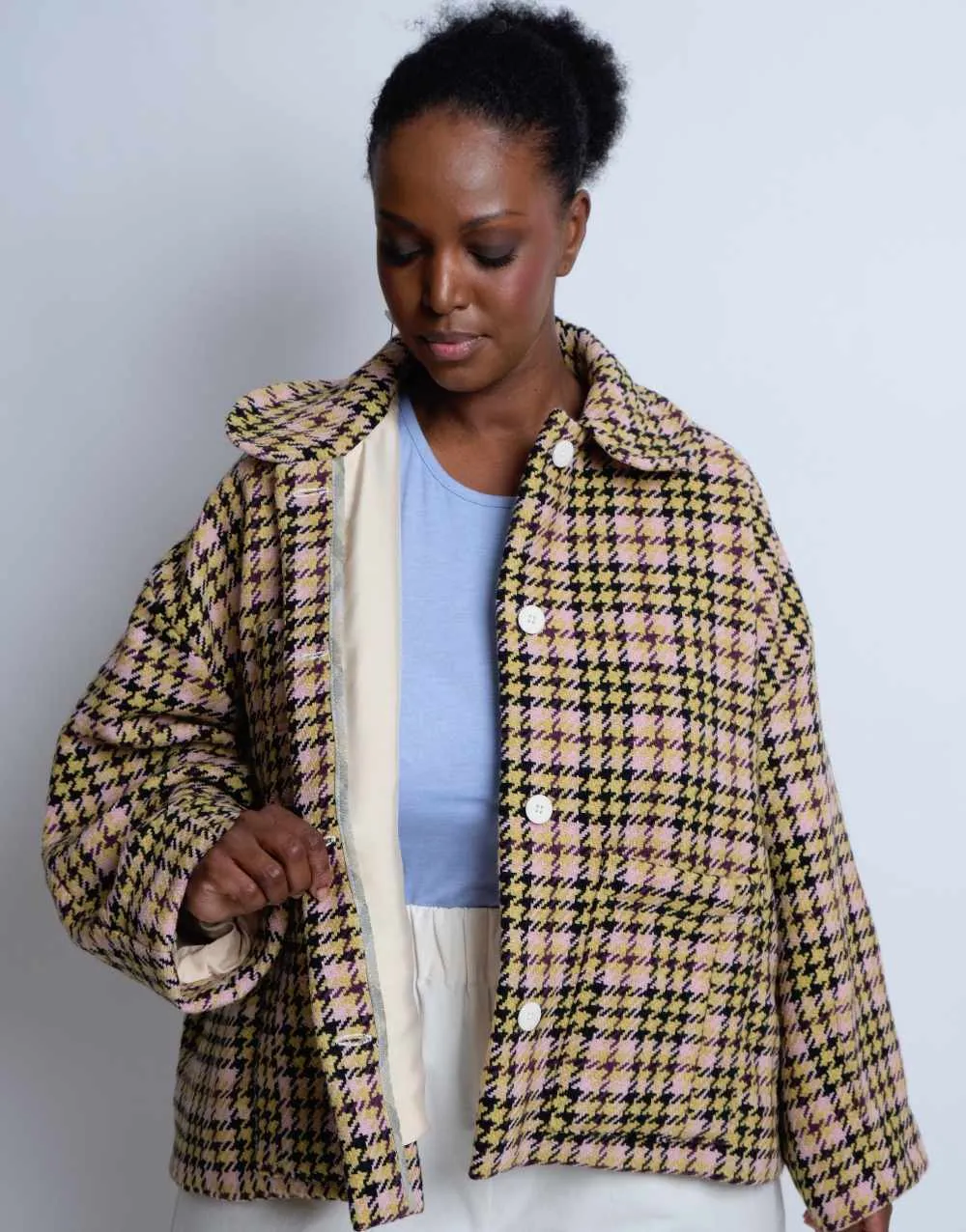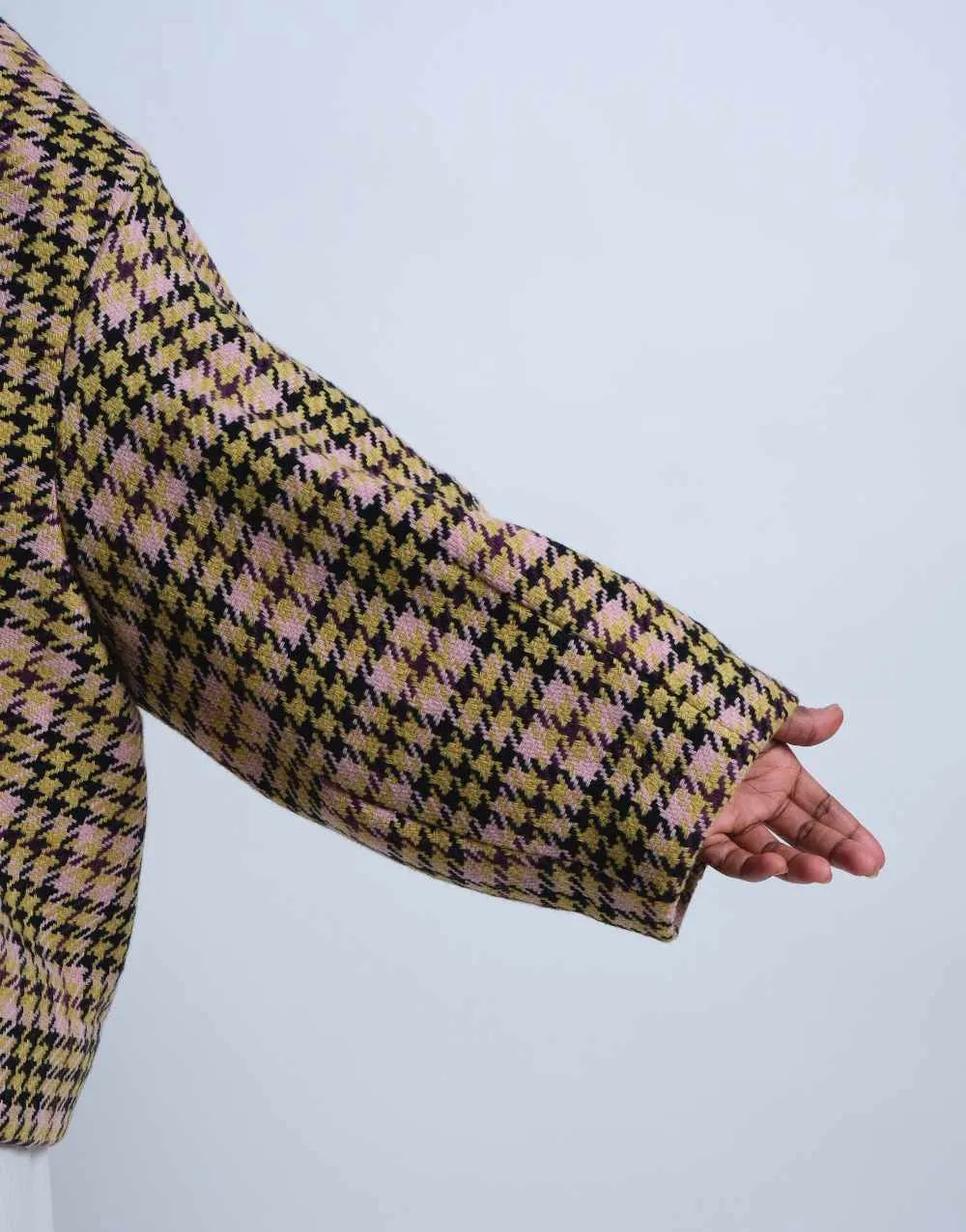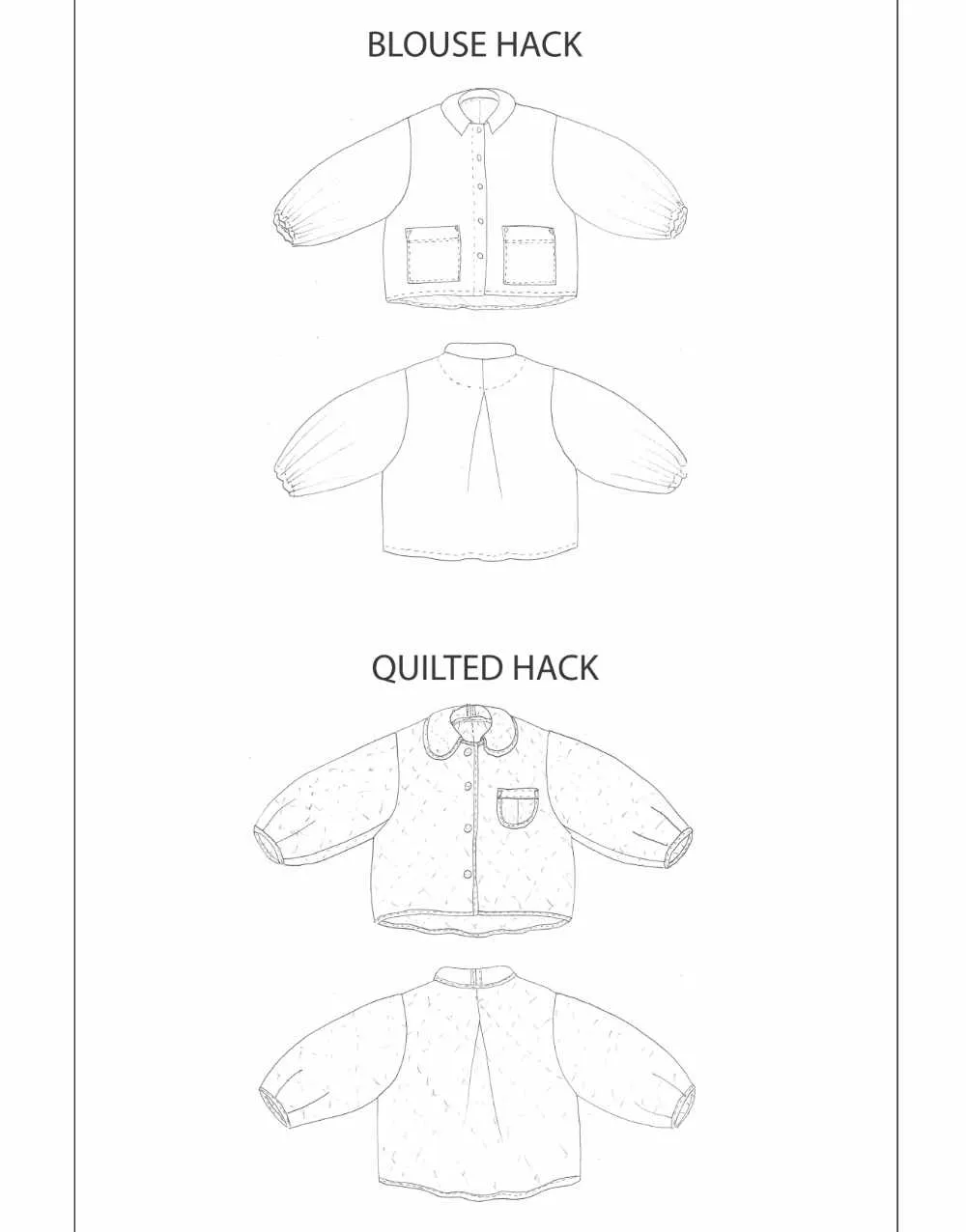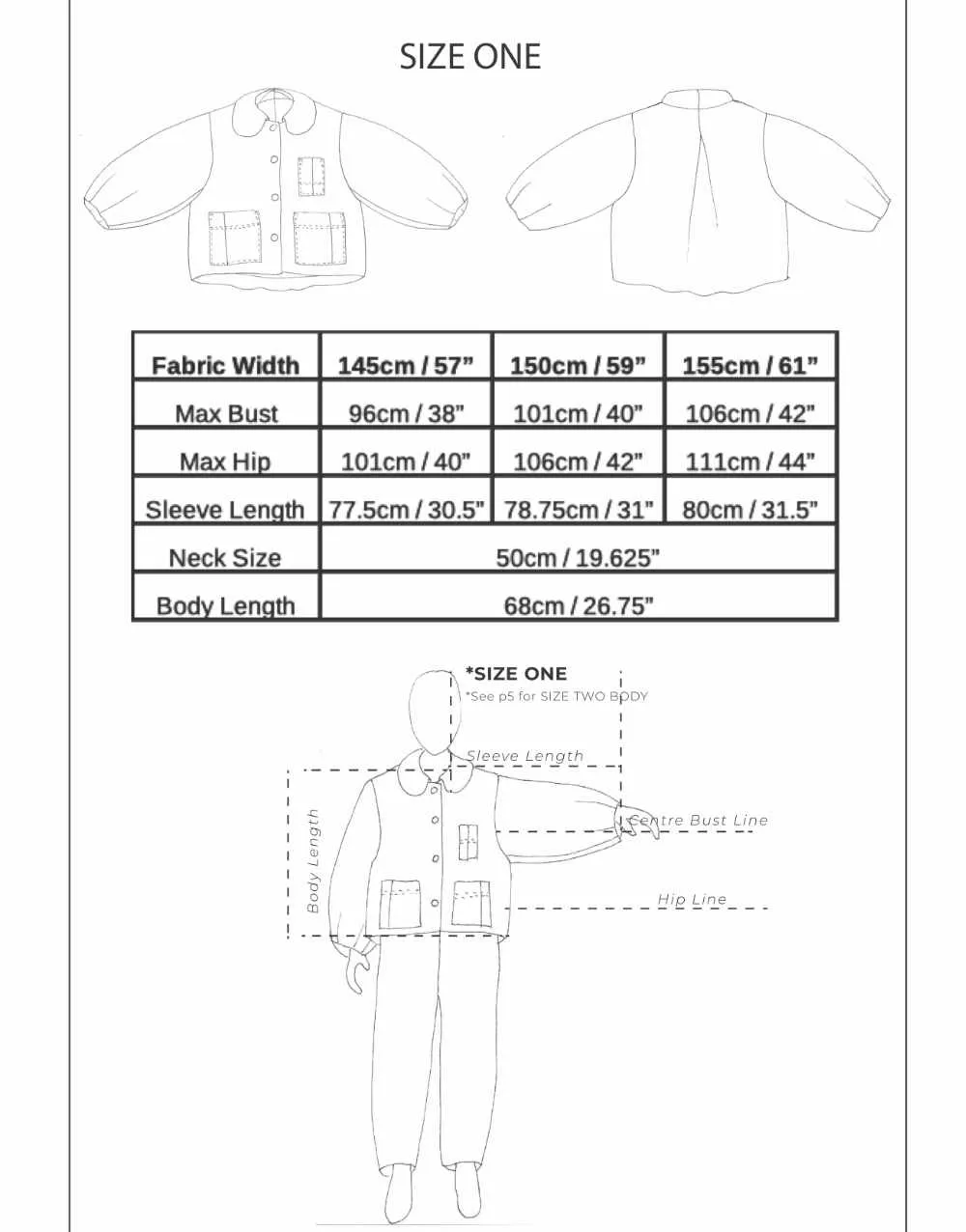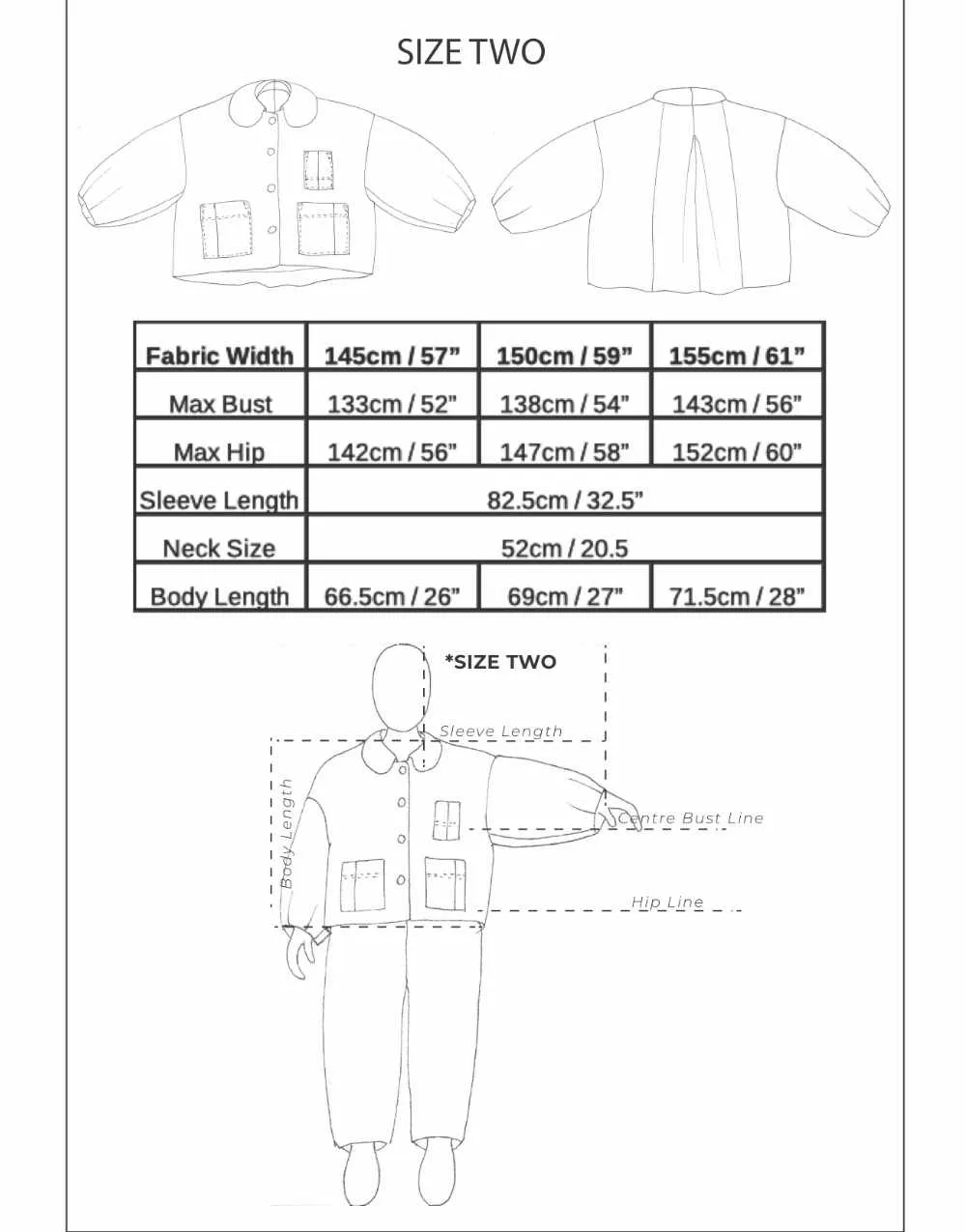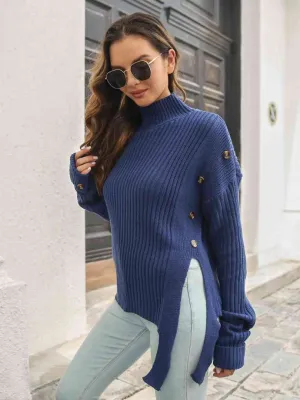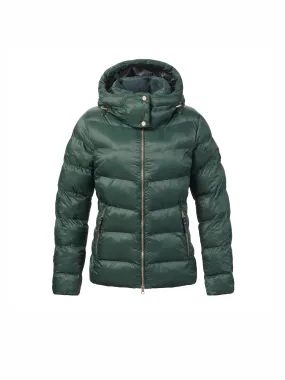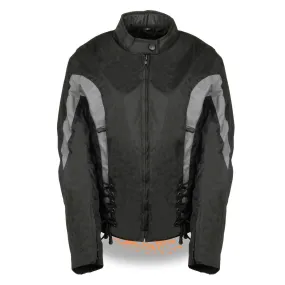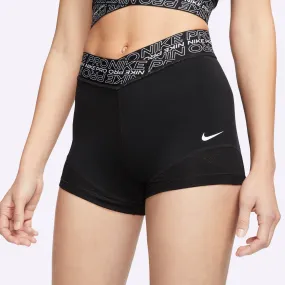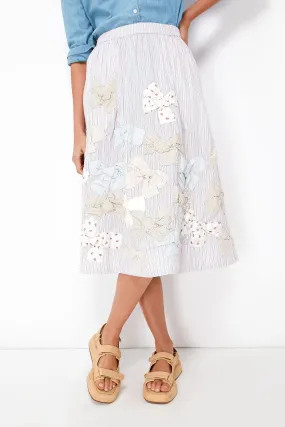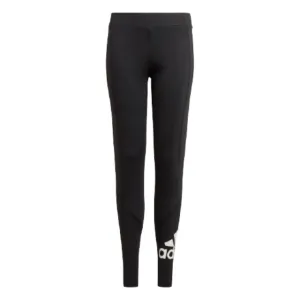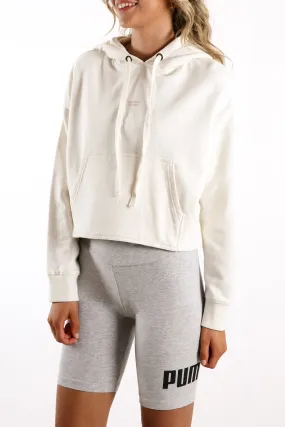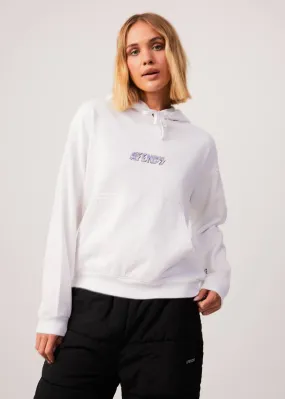The Zero Waste Bell Jacket is an oversized jacket with a rounded collar, front button closure, 3 front patch pockets, an inverted box pleat at the centre back neck, and wide sleeves that are perfect for fitting all of your winter layers underneath. Zero waste pattern cutting is a bit like a puzzle. It is a method of pattern drafting where you utilise a length of fabric end to end by strategically planning your pattern pieces so that everything is used. This pattern does not require the printing of large pattern pieces, instead, you draw your pattern pieces directly onto your fabric with the aid of a cutting plan and templates.
The Bell jacket gets it’s name from the bell shaped sleeve, created with several darts sewn into the hem of the sleeve. This jacket is fully lined.
This PDF instruction booklet has links embedded into it which take you to to online tutorials with colour images to help with most of the more involved sewing instructions. It also comes with 2 hack options, a shirt with a square collar and a quilted version, un-lined. Both of these have online tutorials for the extra steps.
Please note: This PDF sewing pattern uses zero waste pattern cutting and includes instructions to draw shapes directly onto your fabric. With the exception of some templates, there are no large pattern pieces to print out. The cutting plan/templates document for the ZW Bell Jacket requires printing of 11 pages in A4/US Letter Paper. You will receive a link to download the digital files after purchase.
Sewing Level: Intermediate
Sizing: There are 2 size options for this jacket with slight design variations between each. Both are included in the PDF so no need to choose right now. The size TWO has 2 panels at the centre back body and has more of a dropped shoulder than the size ONE. Please see the tab FIND YOUR SIZE for more information.
Recommended Fabrics: Ideal in a wool or heavy weight denim or heavy cotton drill. Recommended linings, something with a bit of weight that has a nice drape. Required lining width is very specific and is based on the OUTER fabric width you are using.
Fabric Requirements:
OUTER: Recommended Widths: 145cm - 155cm / 57 - 61 inches
LINING: Widths based on OUTER width used.
145cm / 57” OUTER = 135cm / 53” LINING
150cm / 59” OUTER = 140cm / 55” LINING
155cm / 61” OUTER = 145cm / 57” LINING
Yardage required
This is a guide only, these yardage requirements may change a little if you want to adjust the lengths of the sleeves and body. Refer to the Instruction Booklet for more.
SIZE ONE: Outer- 130cm / 51", Lining- 120cm / 47"
SIZE TWO: Outer- 150cm / 59", Lining- 140cm / 55"
You will need:
- Iron on fusing in a mid-heavy weight. Required to fuse the hems and collar. More on fusing in the ‘Cutting Plan’ document.
- Binding 4cm / 1.5” wide to finish the centre front bodies and back neck facing, you will require approximately 150cm / 59”.
- 4-5 Buttons approx 20mm / 3/4” in size.
Recommended Tools: Sewing machine, iron, chalk or dissolvable pen, scissors, large right angle ruler and/or long straight ruler.
Techniques used: Button holes, bagging out with lining, darts, patch pockets.
PDF Pattern/Instruction Booklet: Includes measurements in both metric (centimetres) and US imperial (inches). Booklet/Templates are printable on both A4 or US Letter Paper size.
We love working with the Zero Waste method for 3 reasons:
1. More flexibility: This method allows for easy changes such as using different fabric widths and making simple fit and design changes yourself. Using patterns that fit into a zero waste square or rectangular block is a very efficient way to work. It means that it is easier to patchwork together remnants or use left over fabrics you already have lying around.
2. An easy way to learn to self draft your own patterns: Working this way will help you to start building a toolbox of skills, and you will learn an alternative method of self drafting your own sewing patterns, which are super easy for beginners to understand.
3. Less fabric and paper waste: Without having to print full scale paper patterns for all pieces you save on a lot of paper, and you will have little to no fabric waste during the cutting and sewing process!




